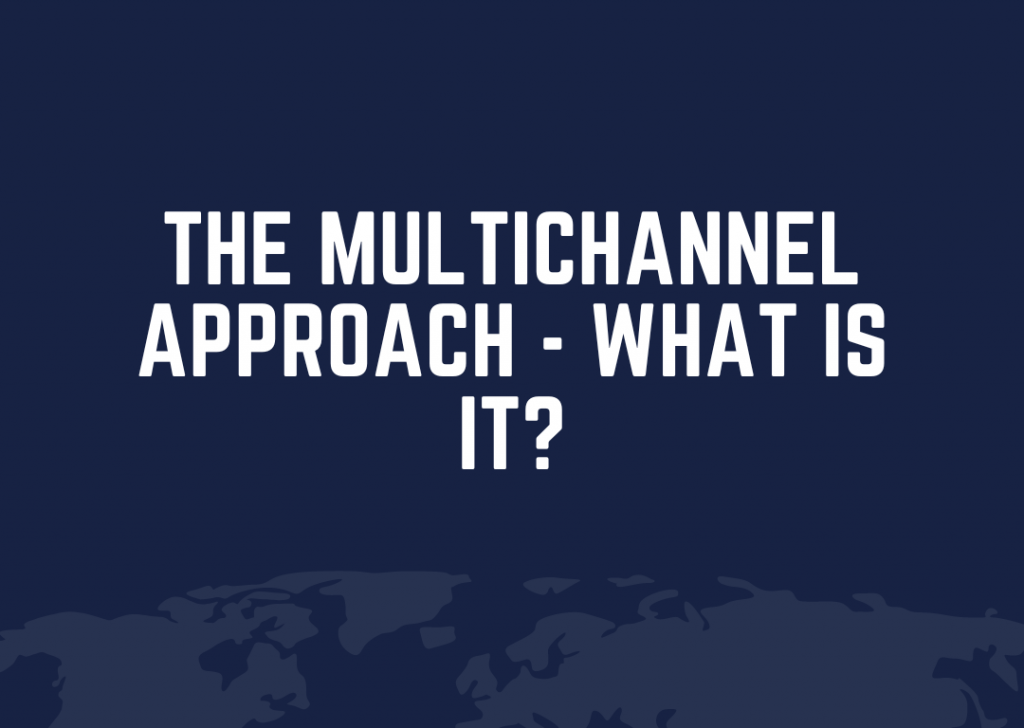
The multichannel approach – what is it?
Today consumers use services and applications on a wide range of devices in different locations and at various times of the day. And they want to choose when and which communication channel should be used. But how should such “multichannel” services be designed, how to think ahead and what challenges can they bring for companies and their suppliers?
The online world around us is changing rapidly. With it, companies that profit from it and “customers” who benefit from it do so as well. We saw the coming of the age of personal computers and fragmented web browser standards, through the era of laptops and the first available mobile internet and finally to today’s smart mobile devices and the order “push everything quickly to mobiles / tablets”.
And smart refrigerators, televisions and cars are already waiting just around the corner …
Very often we hear of companies when starting new projects, as they address questions such as:
- Should we support mobiles / tablets, or should we create a normal website and make a mobile version later?
- Which is better – an HTML5 or native application?
- Which smartphones does our target group use and who will use our service on the web? How will we differentiate?
De facto they’re trying to restrict the channels that are offering their service or product. Alternatively, they choose more channels and then somehow segment them, who will use which one … therefore forcing the user to choose.
Today it doesn’t work that way!
But users, i.e. customers are spoiled. Users have several different end-devices and want to use them according to their preferences, at any given time or location. Basically, how it suits them best.
But they appreciate, and kind of expect these days, that the service will work on various channels.
Multichannel works on the following principles:
- You communicate with the same user / customer.
- You provide a service / feature / information.
- The user solves one „user story“ (e.g. a shopping transaction and decision-making)
- This one user, often within a single “user story”, often uses several different channels and end-devices.
The term „multichannel“ is used more widely in the retail field, which primarily addresses contacting the same customer at the point-of-sale (usually a physical shop) and then seamlessly communicating via other online channels. There is no point in pushing for a detailed definition. Multichannel is more about the approach and way of thinking and designing solutions.
The fact that we use e-mail or Facebook on various devices is something we aren’t really aware of. We regularly use several devices when in contact with the bank or online shopping (in the morning while drinking coffee we read a few reviews on the computer, over lunch we check the prices on a native application of the comparing service, then send the link of the product to our e-mail, later in the evening you look it over with the wife on your tablet and finally pick up your goods the next day from the self-service store using a PIN sent by SMS).
A similar approach and convenient services are becoming more common in many other industries and it is a way how to offer customers a better level of services again.
What challenges are laid before us?
It is clear that this kind of thinking holds many advantages (especially in the long-term), but it also rises new challenges and issues, such as how to properly design and implement.
In the back-end it is primarily about how to manage consolidated data and how to adjust the interface so it “feeds” well all supported communication channels and platforms. Today’s system and software development can solve this already pretty well and reputable companies are doing it in the online environment.
It’s more interesting in the front-end where we can deal with things like:
- How to ensure a consistent look & feel of all channels and how to manage them.
- How to identify and “track” one user across multiple channels within one “user story”.
- How to allow users to continue in the same transaction where they left off using an another channel (in order to make the transition between devices transparent).
- How to implement integrated online analytics into such systems.
Each individual points above can be put to discussion whether it being more technical (if and when to be captivated by the popular mobile-first approach or responsive webdesign solution) or more business (what are the costs and conditions of such approaches and what is the return of investment).
More specific aspects will be brought out in more detail in my following blog posts.
Think of this article as an invitation to a further debate and… Think multichannel!
Was this article helpful?
Support us to keep up the good work and to provide you even better content. Your donations will be used to help students get access to quality content for free and pay our contributors’ salaries, who work hard to create this website content! Thank you for all your support!
Reaction to comment: Cancel reply